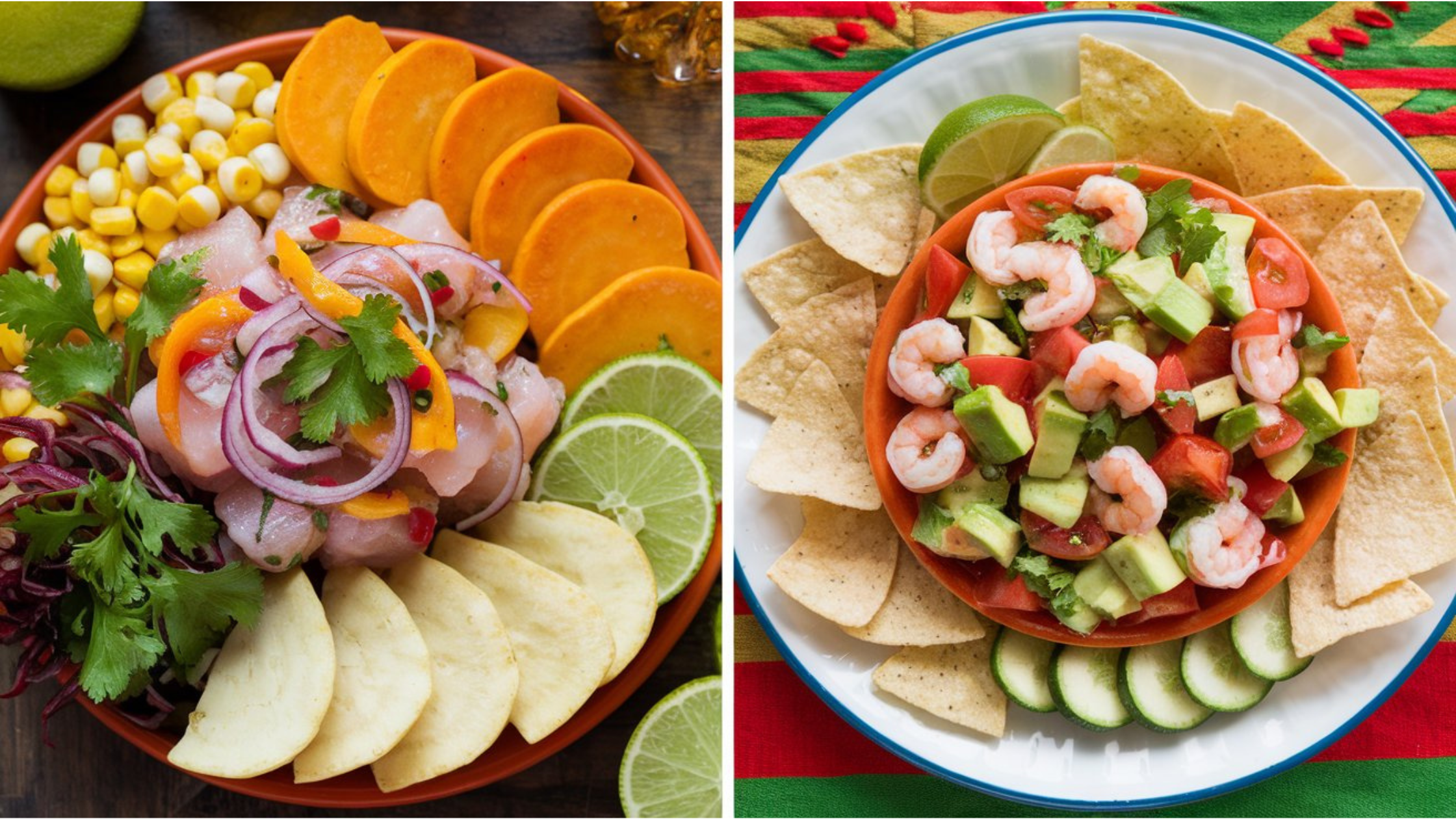Table of Contents
Mexican ceviche and Peruvian ceviche: Exploring the Culinary Diversity
Ceviche is a beloved seafood dish that originated in Peru but has evolved into numerous regional variations throughout Latin America. Two of the most popular types of ceviche are Mexican ceviche and Peruvian ceviche, each with unique characteristics that reflect the culinary traditions of their respective countries. While these ceviche styles share similarities, they also differ significantly in terms of ingredients, preparation methods, and cultural significance.
In this article, we’ll explore the distinct differences between Peruvian ceviche and Mexican ceviche, offering insight into what makes each version of this dish so special.
Peruvian Ceviche vs Mexican Ceviche: Understanding the Key Distinctions
Although Peruvian ceviche and Mexican ceviche are based on raw seafood marinated in citrus, the variations go far beyond this simple concept. Both countries have adapted ceviche to their local ingredients, cultural influences, and personal preferences. Let’s take a closer look at how these two beloved ceviche styles differ.
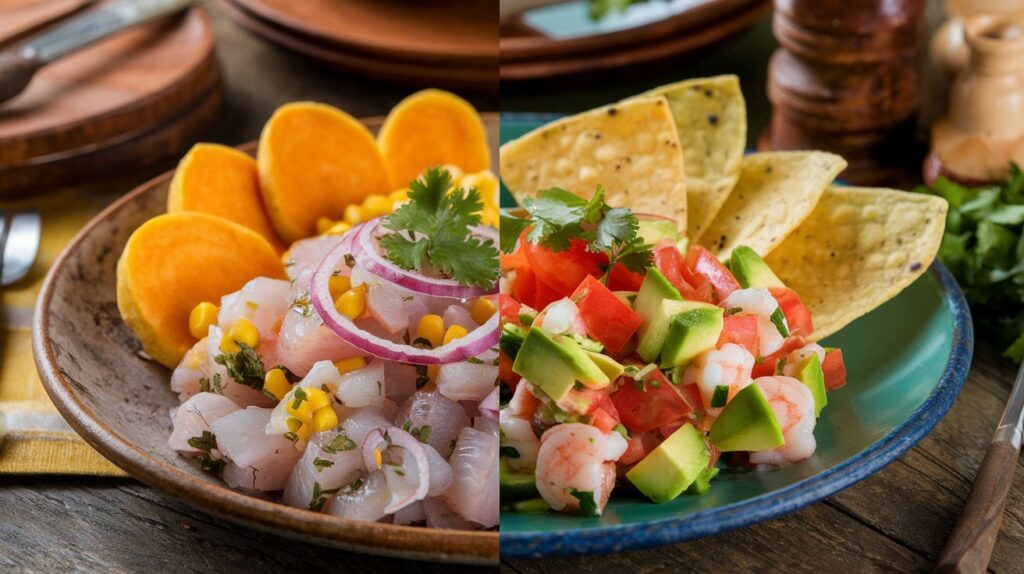
The Origins of Peruvian Ceviche and Mexican Ceviche
Ceviche is said to have originated in Peru, where it has been a staple for thousands of years. The ancient civilizations of Peru used fermented juice from local fruits to marinate their fish, long before the arrival of citrus. The introduction of limes and lemons from Spanish colonizers later transformed this dish into the iconic Peruvian ceviche known today.
Meanwhile, in Mexico, ceviche made its way into the cuisine through coastal regions, where access to fresh seafood was abundant. Mexican ceviche has evolved with local ingredients like tomatoes, avocado, and even the influence of pre-Hispanic food traditions.
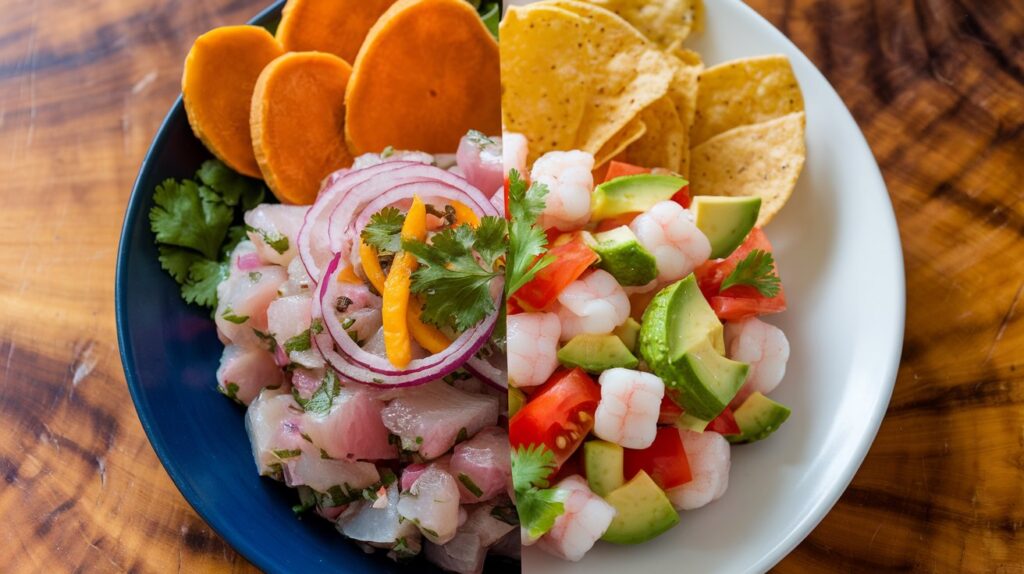
Key Ingredients in Peruvian Ceviche vs Mexican Ceviche
The most notable difference between Mexican ceviche and Peruvian ceviche is their key ingredients. Peruvian ceviche typically focuses on simplicity, featuring fresh white fish such as Corvina (sea bass), onions, cilantro, and a special chili pepper called aji amarillo. This version often highlights the flavor of the fish with minimal adornments. The star of Peruvian ceviche is “leche de tigre,” the citrus-based marinade infused with fish juices and aji pepper, giving the dish its sharp, vibrant taste.
Mexican ceviche, on the other hand, is more complex, incorporating a variety of ingredients that add layers of flavor and texture. It often includes a mix of seafood like shrimp, octopus, or fish, combined with tomatoes, avocado, jalapeño peppers, onions, cilantro, and lime juice. This version is heartier and more colorful, thanks to the addition of vegetables and the occasional fruit like mango.
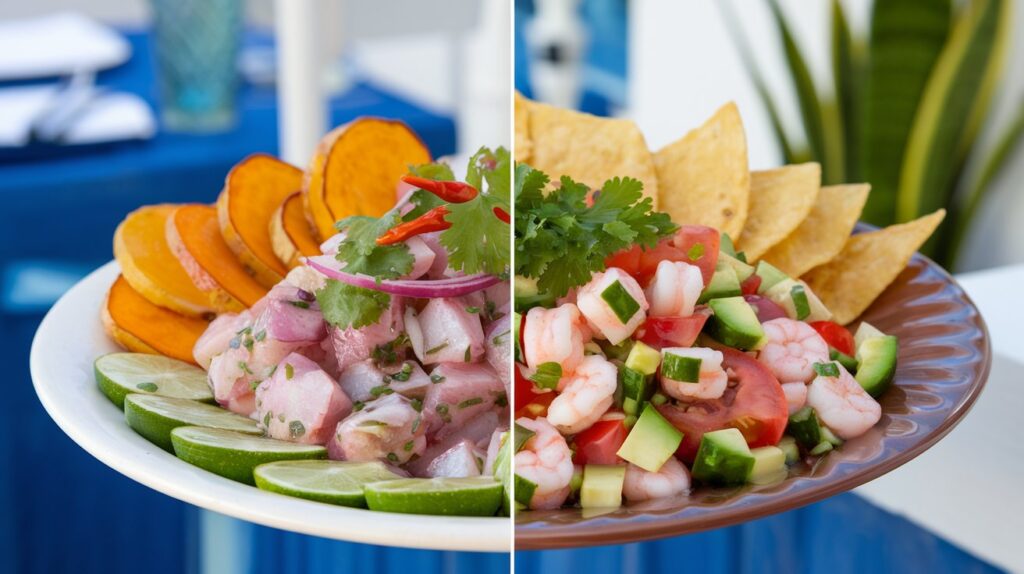
Preparation Methods for Peruvian Ceviche and Mexican Ceviche
The preparation process for ceviche differs between Peru and Mexico. In Peru, the fish is marinated for a very short time—often only minutes—preserving its raw, firm texture. The acidity from the lime juice “cooks” the fish just enough to give it a delicate flavor without altering its original texture. The use of “leche de tigre” enhances the dish’s brightness and sharpness, making it a refreshing, bold experience.
Mexican ceviche, in contrast, often marinates for a longer period, which results in a more “cooked” appearance and softer texture. Mexican ceviche is more relaxed in its approach, often prepared with seafood like shrimp or crab, which require longer marination to fully absorb the citrus flavors. The dish also takes on a juicier, more salsa-like consistency, thanks to the use of tomatoes and other vegetables.
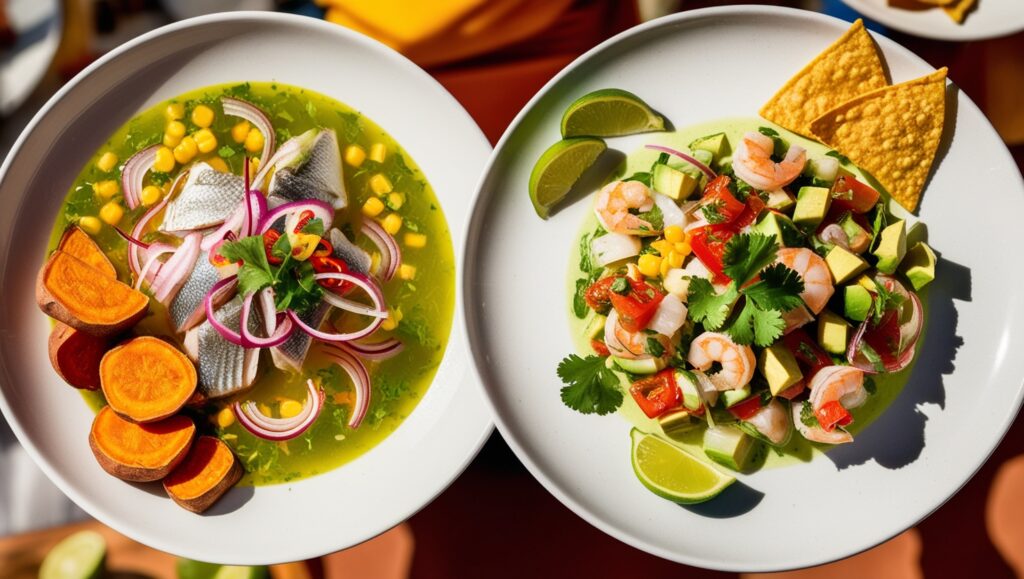
Serving Styles and Accompaniments for Peruvian Ceviche and Mexican Ceviche
Another key difference lies in how Mexican ceviche and Peruvian ceviche are served. In Peru, ceviche is typically accompanied by sweet potatoes, cancha (toasted corn), and choclo (large-kernel Peruvian corn), creating a contrast between the acidity of the ceviche and the natural sweetness of the accompaniments. It’s often served in a shallow dish, allowing the liquid from the marinade to blend with the starchy sides.
In Mexico, ceviche is more often served with crunchy tostadas or saltine crackers, providing a crispy texture to balance the soft seafood mixture. Mexican ceviche may also be garnished with slices of avocado or even a dash of hot sauce for added heat. The presentation is typically casual, with the ceviche sometimes served in glasses for a more cocktail-like appearance, especially in beach towns along the coast.
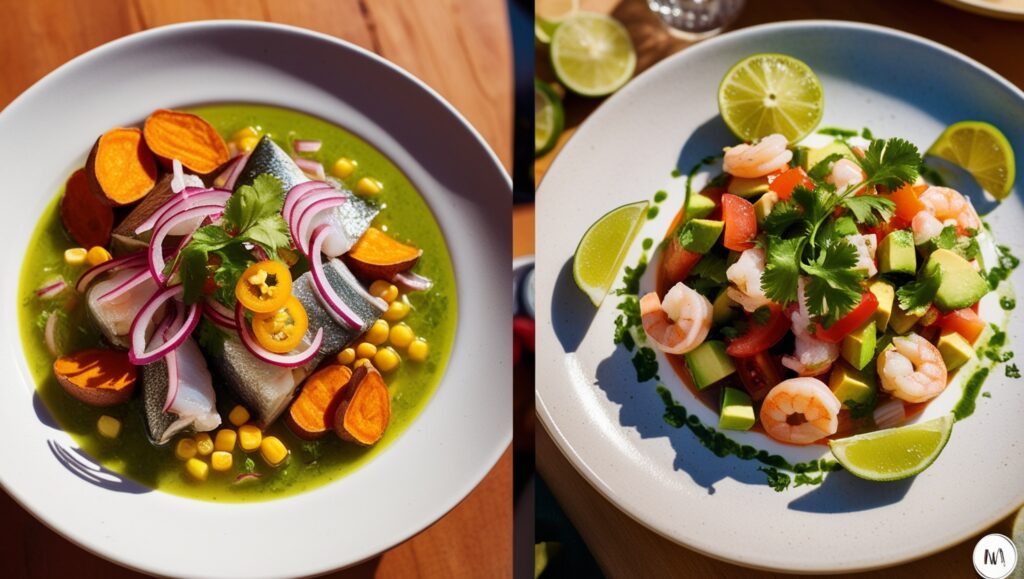
Conclusion: Appreciating the Diversity of Ceviche Across Latin America
In conclusion, the differences between Mexican ceviche and Peruvian ceviche highlight the rich culinary diversity of Latin America. Both versions offer distinct flavors and textures, showcasing the unique cultural influences of their respective regions. While Peruvian ceviche focuses on simplicity and raw freshness, Mexican ceviche embraces a heartier, more colorful profile with a variety of ingredients. Understanding these differences allows us to appreciate how ceviche has become a versatile, beloved dish throughout the continent.
Whether you prefer the zesty, clean taste of Peruvian ceviche or the flavorful, vibrant mix of Mexican ceviche, both dishes stand as delicious examples of Latin American culinary heritage.

